
Information boards have been placed on old trolleys at the old Ghan sidings and stations.

First the Ghan line, then the Leigh Creek coal line – both closed.
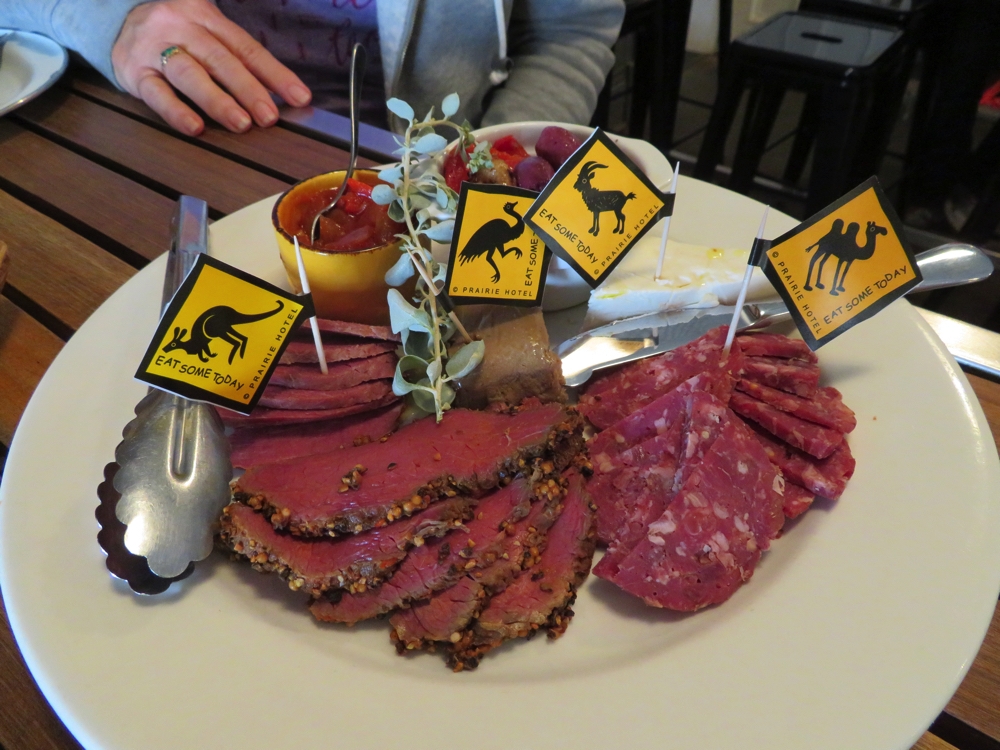
The ‘feral food’ antipasto platter. At Parachilna pub.

Gone are the glory days of Parachilna Railway Station.

Entrance to the Beltana Station.
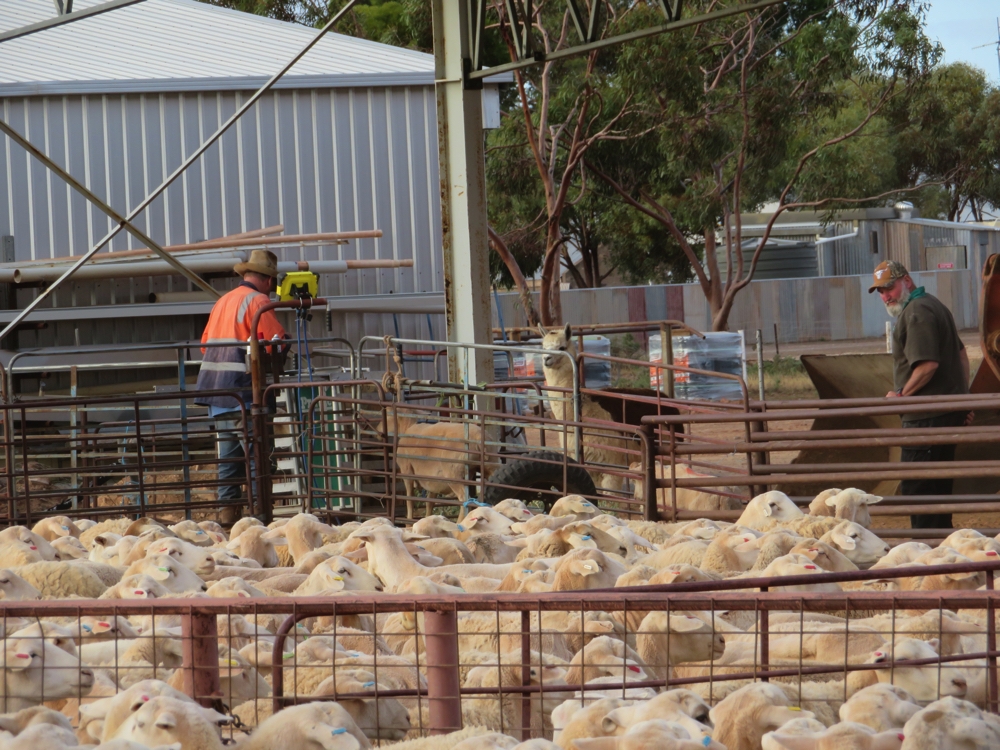
Sorting the sheep by weight – ready for sale tomorrow. Note the watchful eye of the alpaca. Beltana Station.

Beltana uses alpacas to guard the sheep from dog and dingo attacks. The owner told us most of the lambs they lose these days are to eagles.

The shearing shed C1900. Today it’s the kitchen and meals area for the staff and guests, and also houses the museum.
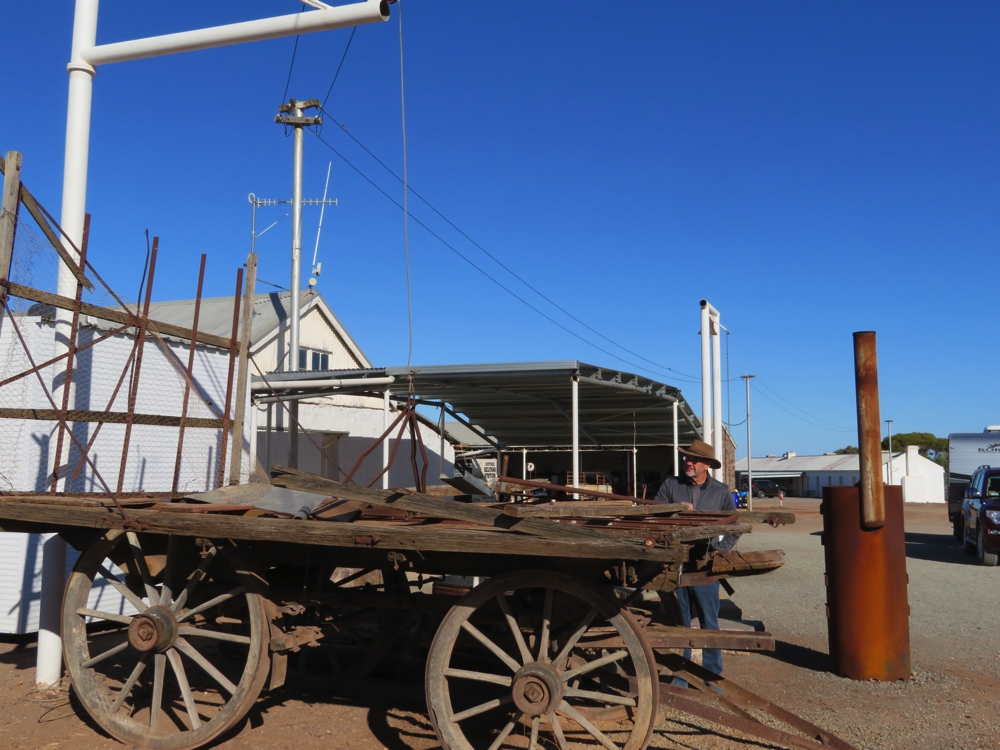
The original shearing shed is in the background. This is the trolley and lifting apparatus used to haul the big bales of wool.

Beltana Station shearing shed museum.

The holding pens in the old shearing shed now display items from a bygone era. Beltana Station.

The shearing equipment still remains in the old shearing shed – though this section of it is now a museum. Beltana Station.

The first aid kit for the Station in the museum. I remember elastoplast in those tin boxes.

The museum machinery. Beltana Station.

This old girl has seen a lot of miles over many years. Now at rest. Beltana Station.

Giles expedition to the west coast began from here, at Beltana Station.

The old Bedford work truck. Everything has its day.
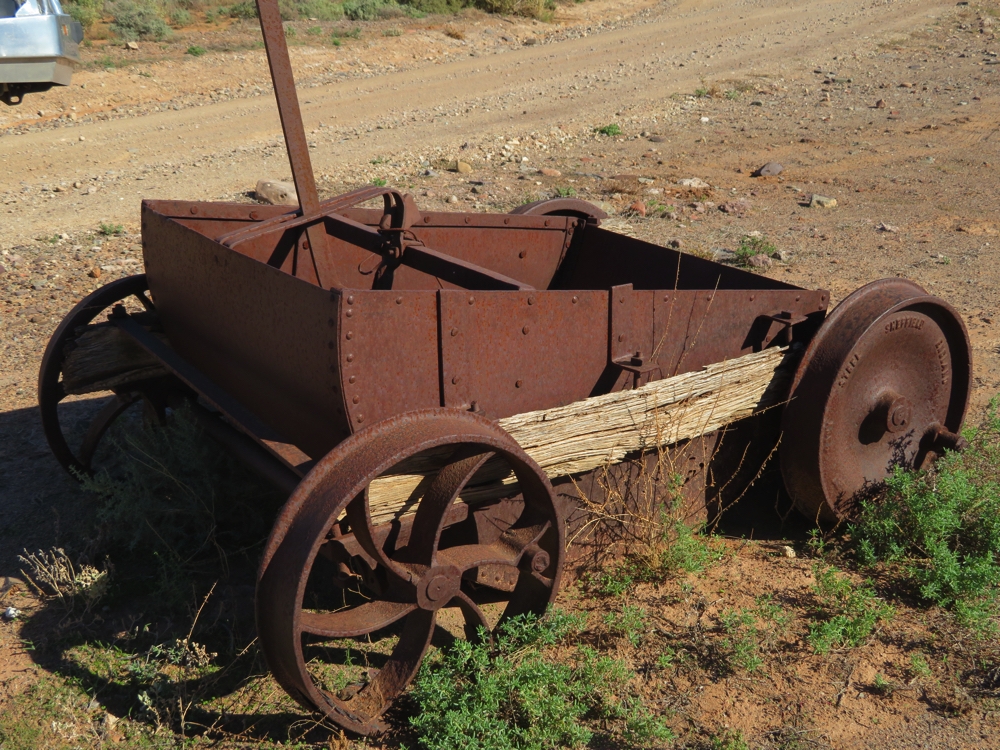
A little bit of Ghan heritage at the entrance to Beltana Station.

Feral goats, penned and ready for transport to the sales yards.

They’re catering for the RV tourist. If not the most salubrious dumps point we’ve come across it is definitely in the most interesting place.

Beltana Historic Town

Information board about Beltana’s role in the Ghan history.

This was the old railway station in Beltana. The Ghan stopped here until 1956 when the line was realigned 10km to the west as a result of the coal mine at Leigh Creek. It’s now privately owned and become someone’s home.

Some of the old homes in Beltana town are privately owned and still cared for.

A brand new picnic area, and possibly campsite, is being built at Beltana town.

A plaque commemorating the contribution of the Afghan cameleers to the development of central Australia.

The Afghans had a camp not far from Beltana. This plaque gives some history of the camp.

There’s a lot of history at Beltana. This photograph shows a camel train at Beltana.

The spring-fed well at the Afghan camp at Beltana. Note the trough running away from the well, which would have been used to water the camels.

Descending the Afghan well. Brilliantly constructed!
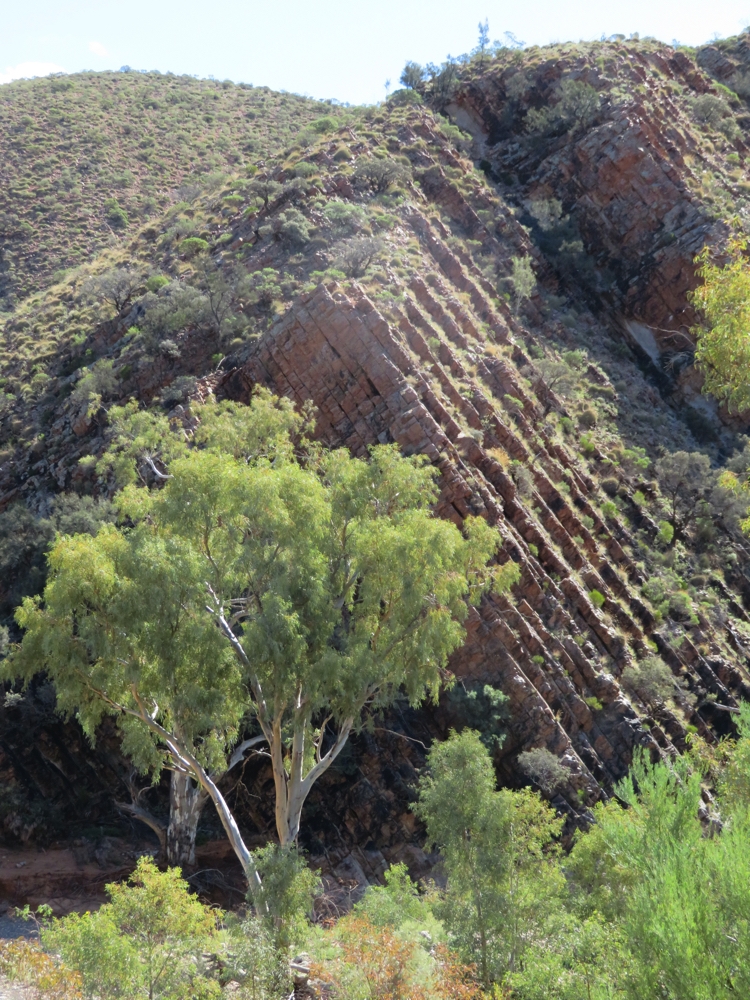
Amazing landscapes here at Aroona Dam.

The dam wall and more of that very interesting geology. Aroona Dam.
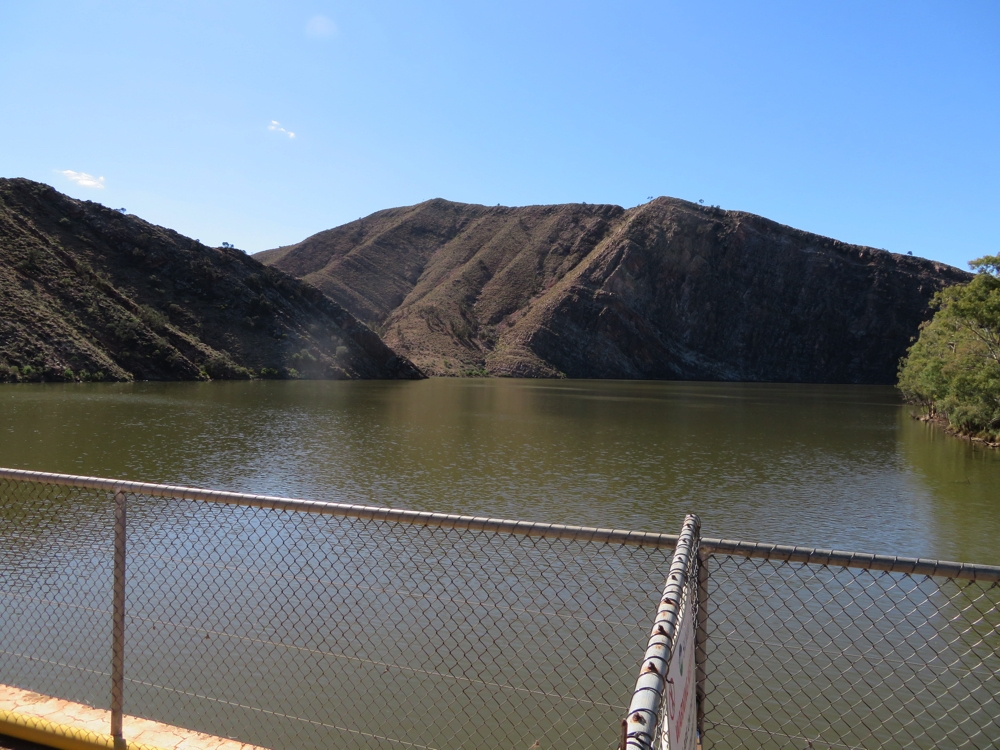
Aroona Dam.
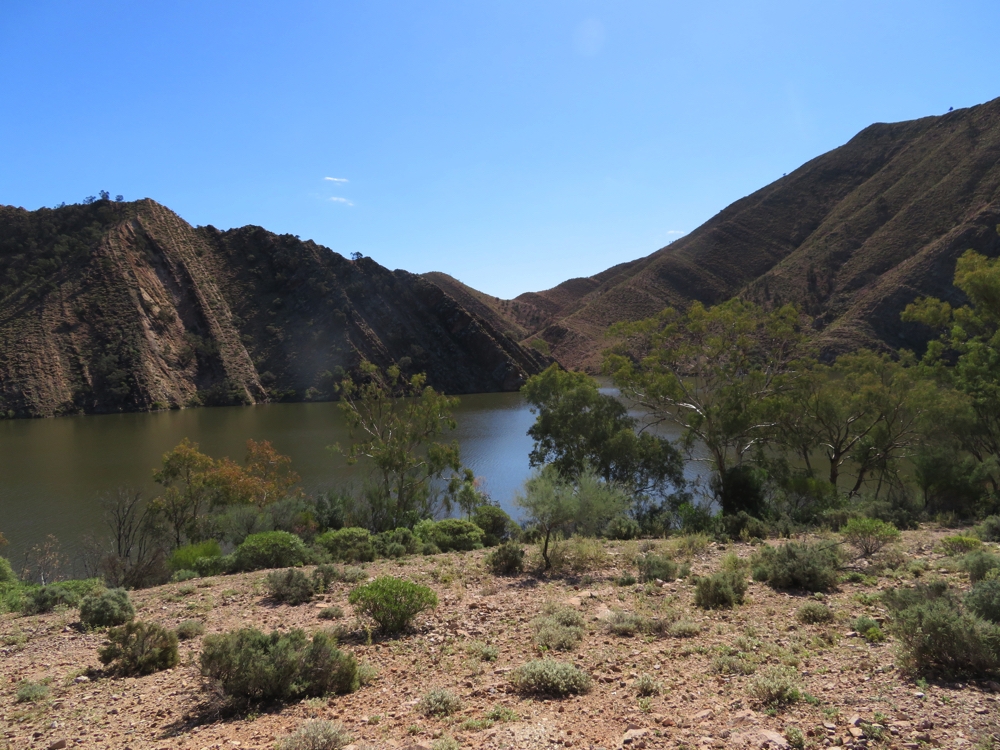
Aroona Dam is very deep. It’s perfect for this climate, having a small surface area, but deep.

Steve, inspecting Aroona Dam.

Ignore these Road Restrictions at your peril. All good for this first leg of our trip.

And so we begin our travels on unsealed roads. Bring it on! The road south of Marree. Note the flat countryside.

Ochre pits. Amazing how large they are.

Talc Alf with just a few of his sculptures in his outdoor art gallery. Look closely at the flag on his hat.
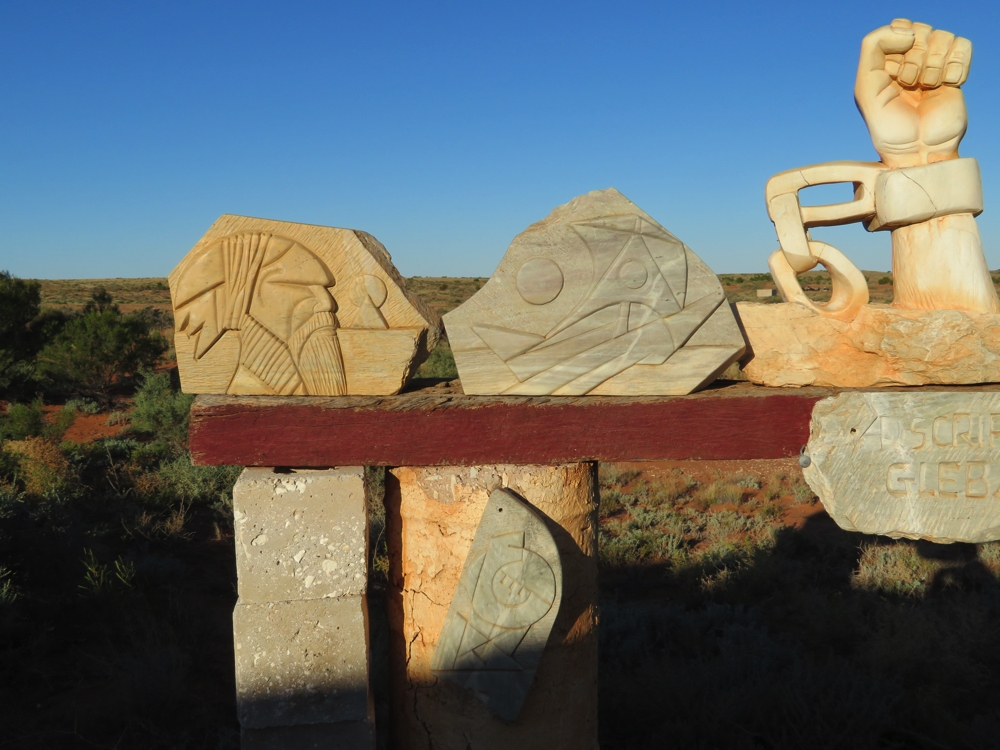
Some of Talc Alf’s extraordinary sculptures.

Every work of art has a story. Talc Alf
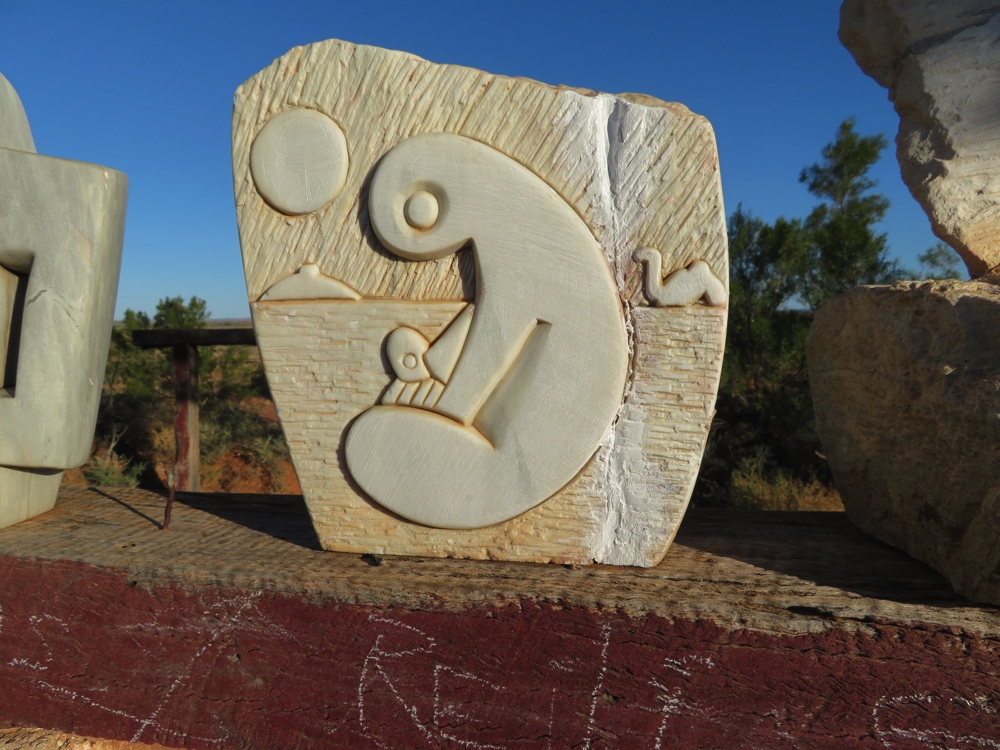
Mother and child … and camel in the background.
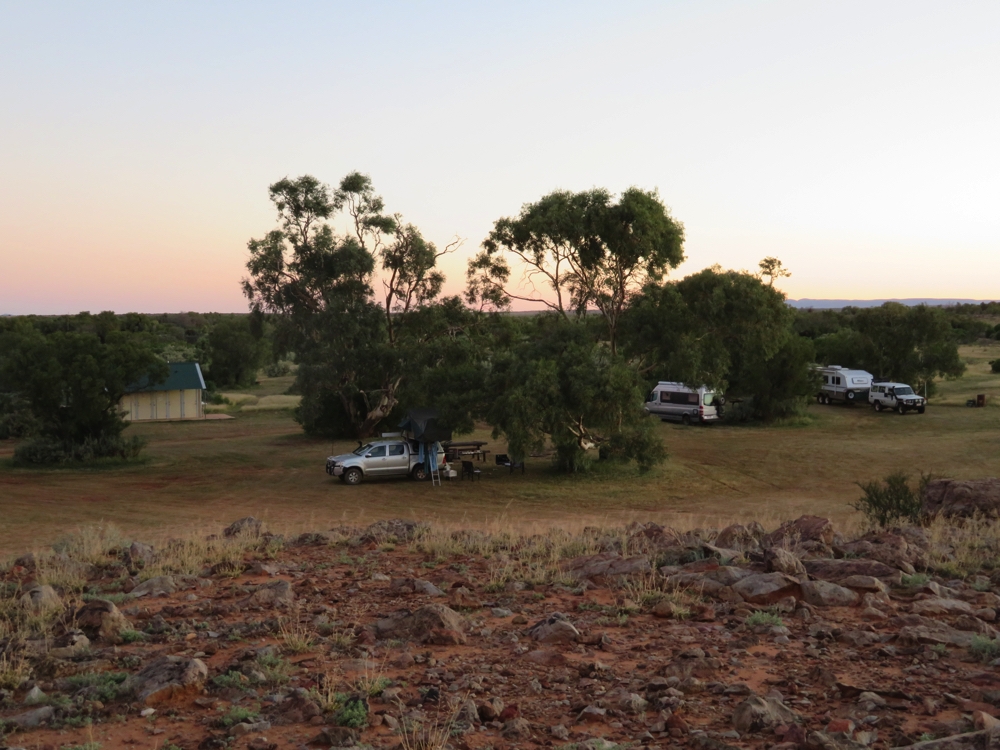
Our campsite at Farina at sunset – a delightfully unexpected treat.

The ANZAC memorial at Farina Campsite.

Ahh a bit of well deserved R&R. At Farina campsite.

Plenty of hot water for showers – but you have to light the donkey first! Farina campsite.

One of two geocaches Steve found at Farina.

BBQ for dinner tonight. At Farina campsite.

Partially restored buildings in Farina.
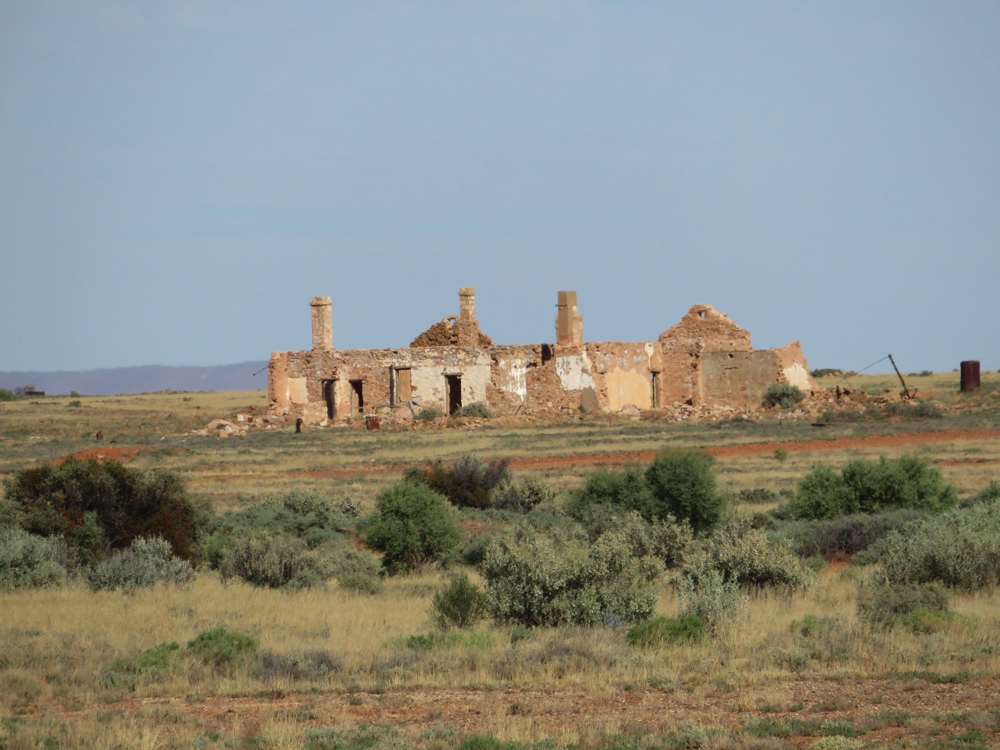
Farina must have been a very attractive and vibrant town once upon a time.

Restoring Farina
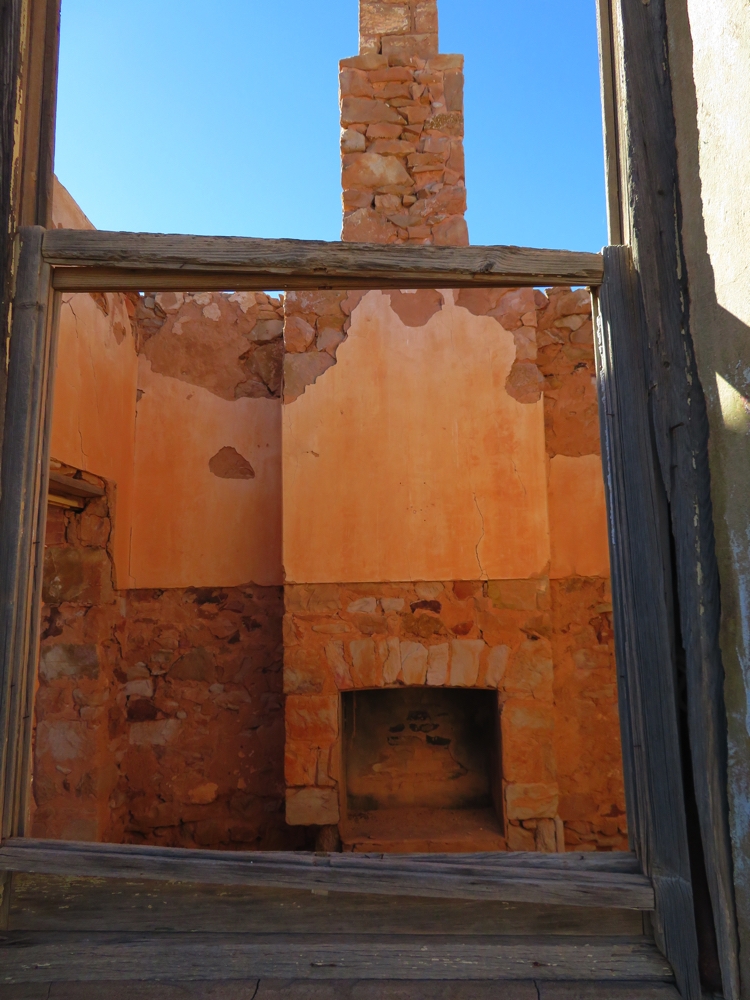
Looks like the Farina residents would be warm in winter – but summer wouldn’t be much fun.
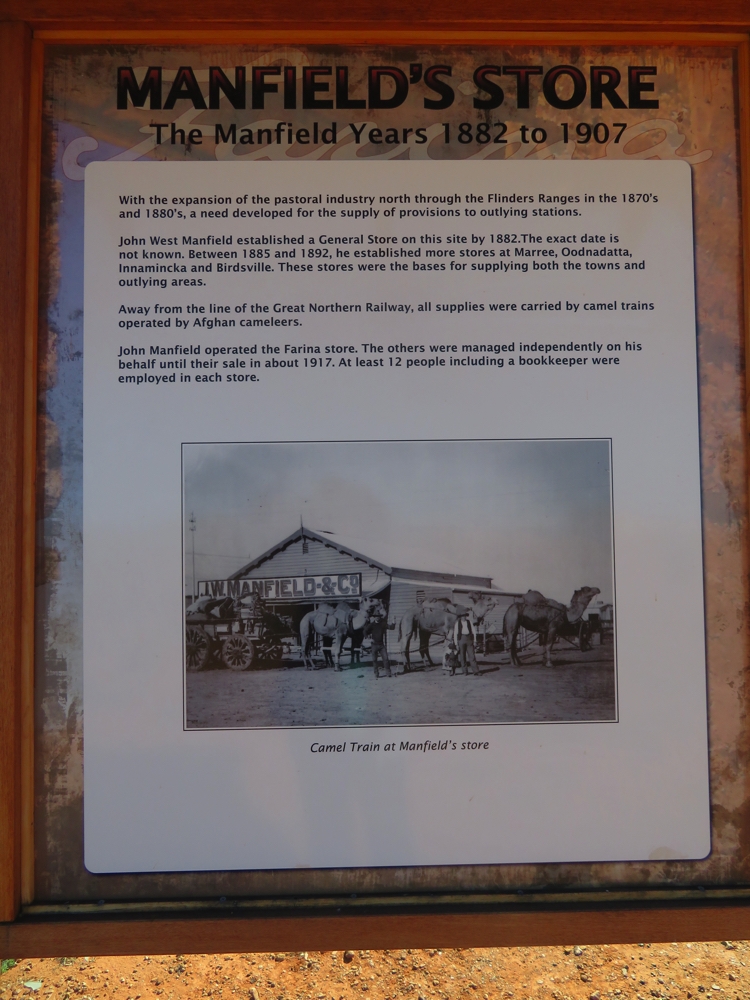
These information boards around town brought the ruins to life. Farina.

The underground bakery at Farina. It was more or less intact. The volunteers restoring this little town plan to make it functional again and offer a cafe service with home-baked goodies.

The bakery information board.
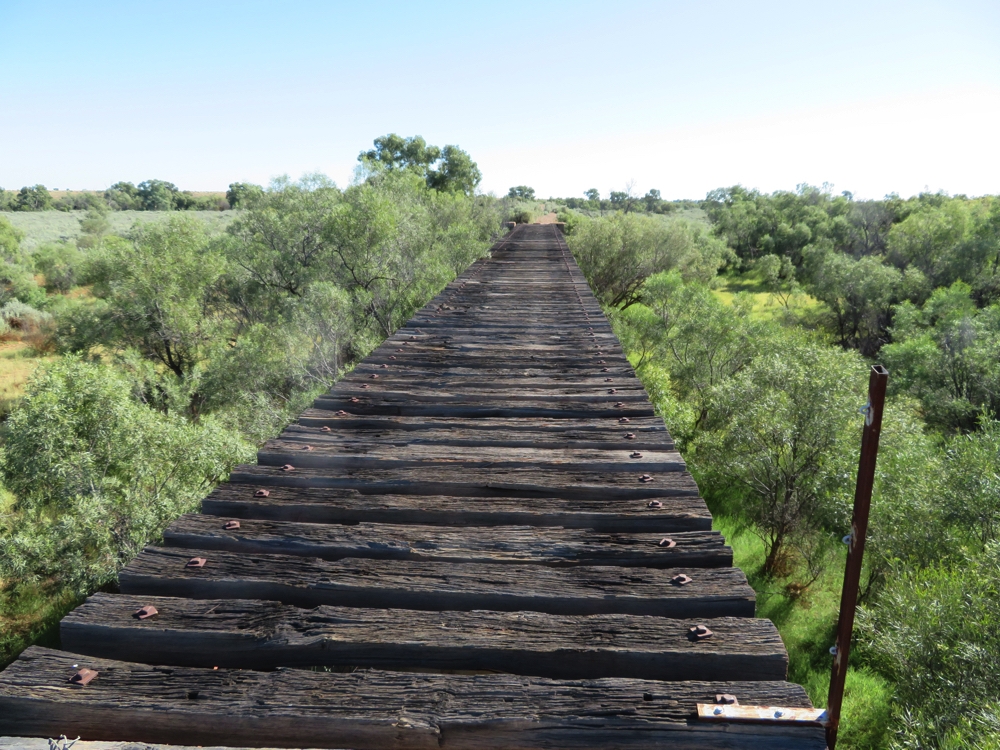
The rail bridge for the Ghan at Farina. You can see where the rails have been removed.

Some old rolling stock at the Farina railway siding. Note the water filling tower in the background.

The water tower at Farina railway siding. This style of cast iron tank is common at the Ghan sidings – the water being used to refill the steam engines.
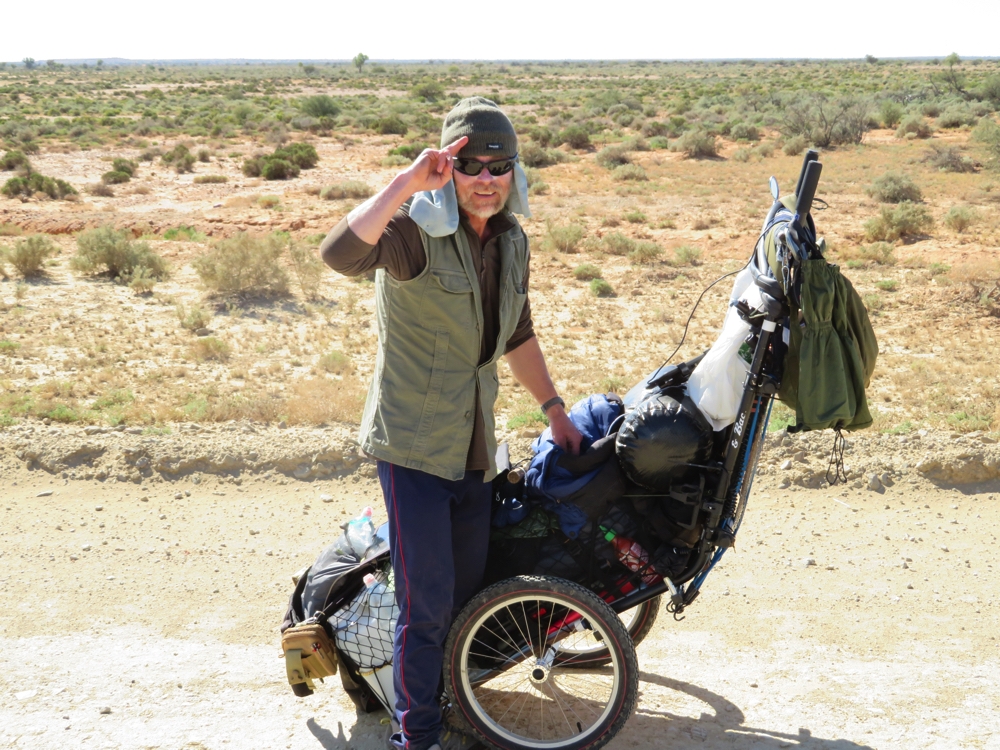
Brendon, a crazy (in my opinion) Brit who is walking from Adelaide to Karumba. Now that’s a trek and a half!

Stuart’s contribution to opening up central Australia is commemorated. His expeditions permitted not only communication from south to north, but also settlements and farming.
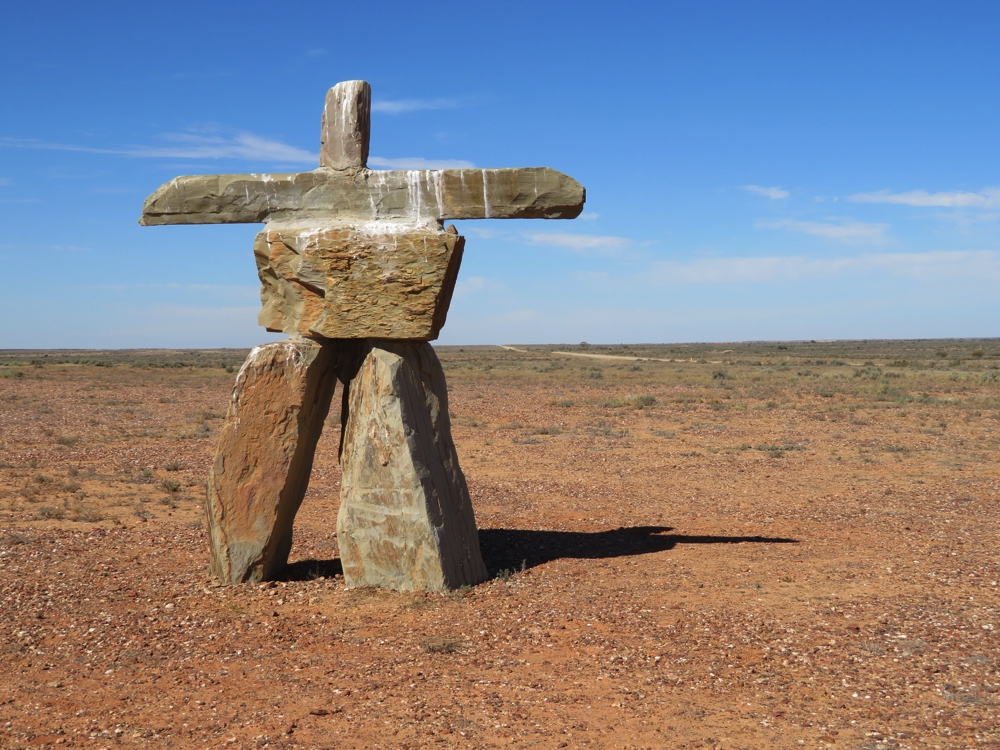
John McDouall Stuart statue – stylised I’m guessing!
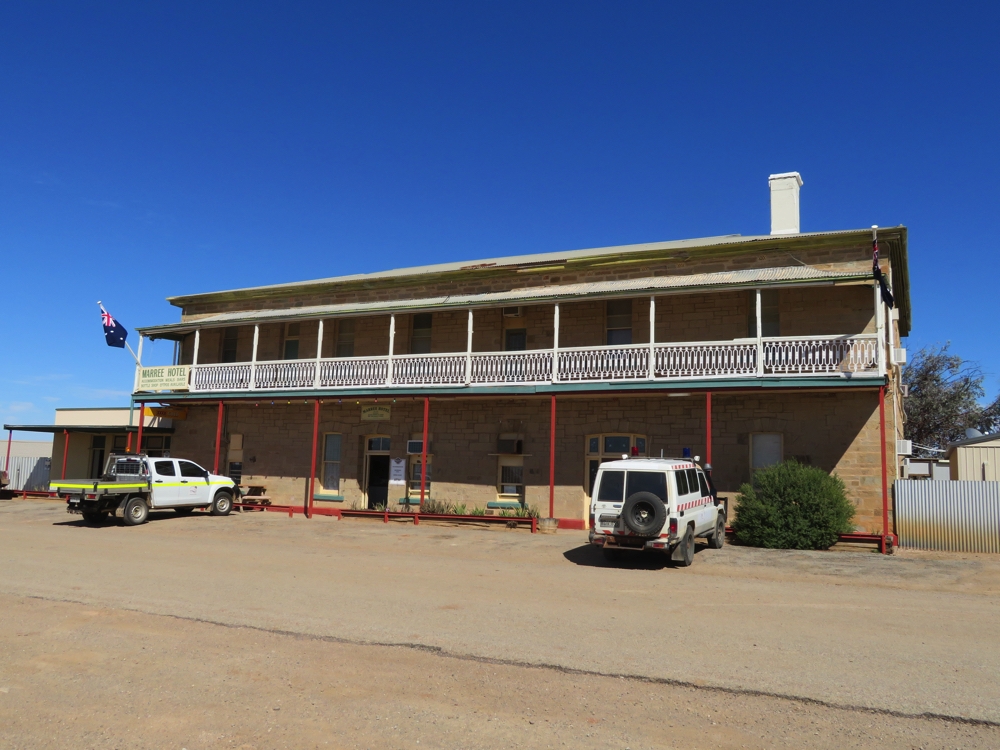
Marree hotel. It’s sated many a thirsty person since before the days of the Ghan.

The old Ghan lines have been retained here in Marree, and the railway station is in good repair. Some of the buildings have been repurposed and continue to serve the community.

A Ghan diesel loco that’s had it’s day.
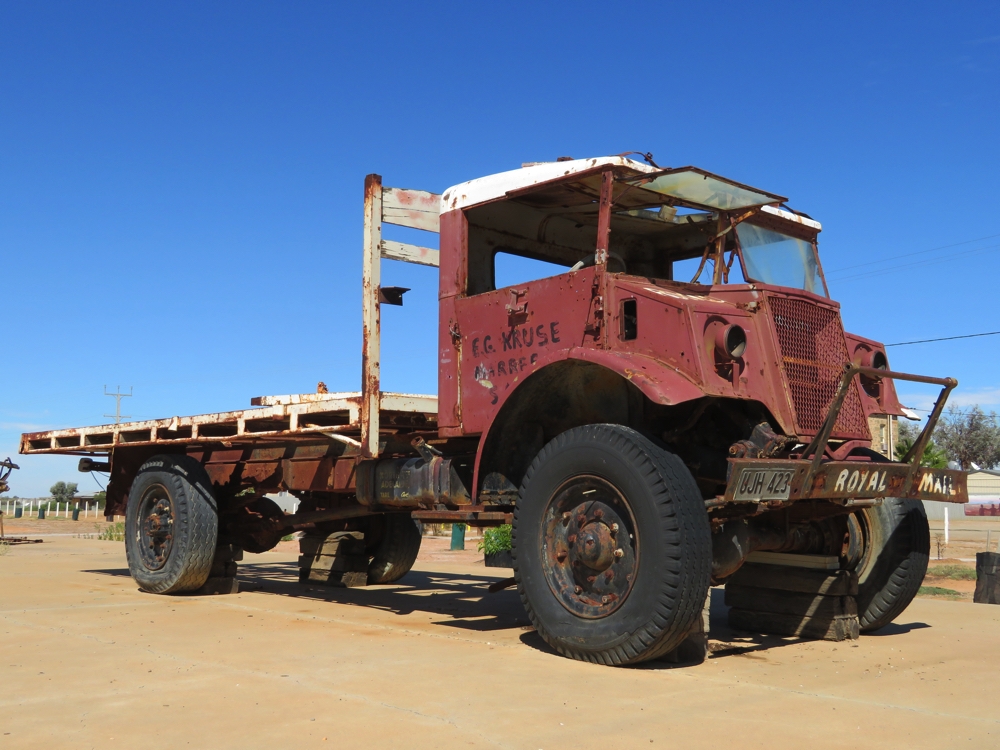
Tom Kruse’s contribution to outback people is not forgotten – here is the truck he used to deliver the mail and supplies along the Birdsville Track. There’s also a museum of photos, memorabilia and a short documentary that was interesting to view. Altogether a pretty amazing man.

Lake Eyre yacht club at Marree. They’ve got quite a few boats.
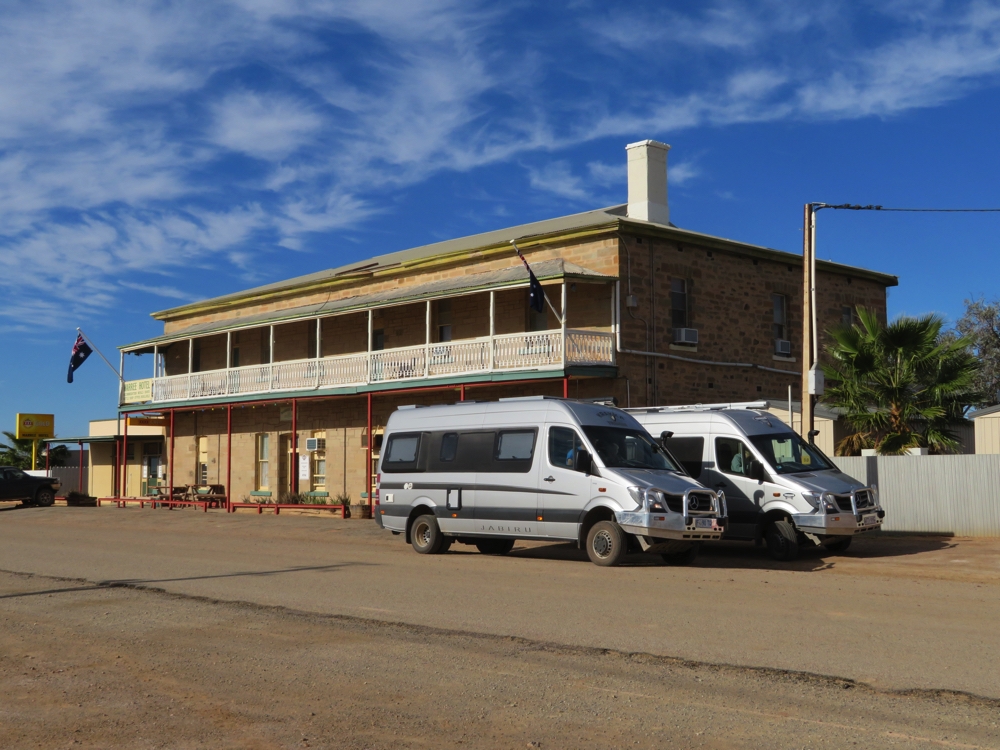
The two Trakkas ready to leave from the Maree pub.